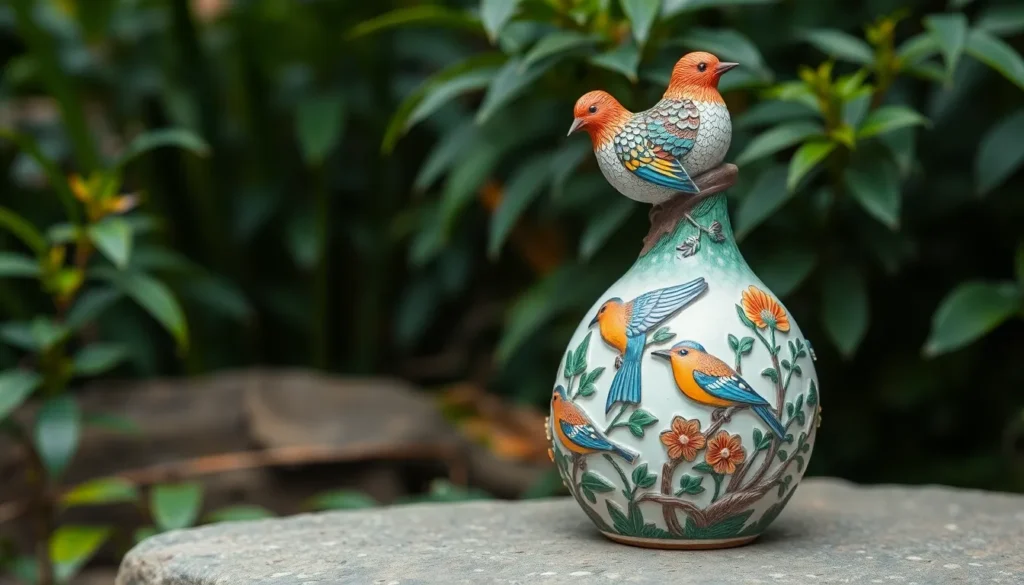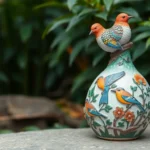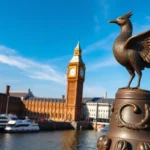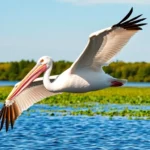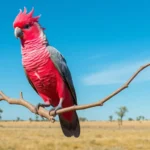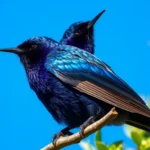Birds have captivated human imagination for thousands of years and their symbolic power continues to soar through art design and culture today. From ancient Egyptian hieroglyphs to modern fashion runways we see these winged creatures representing everything from freedom and spirituality to power and transformation.
Bird motifs aren’t just decorative elements – they’re storytelling devices that speak to our deepest desires and aspirations. Whether you’re spotting a delicate sparrow pattern on vintage wallpaper or admiring bold eagle emblems on contemporary logos these designs carry meaning that transcends mere aesthetics.
We’ll explore how bird motifs have evolved across different cultures and mediums revealing why they remain one of the most enduring and versatile design elements in our visual vocabulary. Understanding these patterns can transform how you appreciate art interpret symbolism and even incorporate these powerful motifs into your own creative projects.
What Is a Bird Motif?
A bird motif represents recurring visual patterns featuring avian forms across artistic mediums and decorative applications. These design elements incorporate stylized or realistic bird imagery to convey symbolic meanings within cultural contexts.
Bird motifs function as artistic shorthand for concepts like freedom, transcendence, and spiritual connection. Artists integrate these patterns into textiles, ceramics, jewelry, and architectural elements to communicate exact messages. Visual representations range from simple silhouettes to intricate feather details depending on the intended aesthetic impact.
Traditional bird motifs carry distinct cultural significance across different societies. Ancient Egyptian art featured sacred ibis and falcon imagery to represent divine protection. Chinese artistic traditions emphasize phoenixes and cranes as symbols of rebirth and longevity. Native American cultures incorporate eagle and hawk motifs to signify strength and vision.
Contemporary designers adapt bird motifs for modern applications while preserving their symbolic resonance. Fashion brands use these patterns on clothing and accessories to evoke natural beauty. Interior designers incorporate bird imagery through wallpaper, upholstery, and decorative objects to create organic atmospheres.
Bird motif variations include abstract geometric interpretations and photorealistic representations. Minimalist approaches reduce avian forms to essential lines and shapes. Detailed renderings capture exact species characteristics for educational or naturalistic purposes. Stylized versions blend traditional cultural elements with contemporary aesthetic preferences.
These motifs appear consistently across global artistic traditions because they tap into universal human experiences with nature. We recognize birds as symbols of aspiration and transformation regardless of our cultural background. Their ability to fly connects them to concepts of spiritual elevation and escape from earthly constraints.
Historical Significance of Bird Motifs
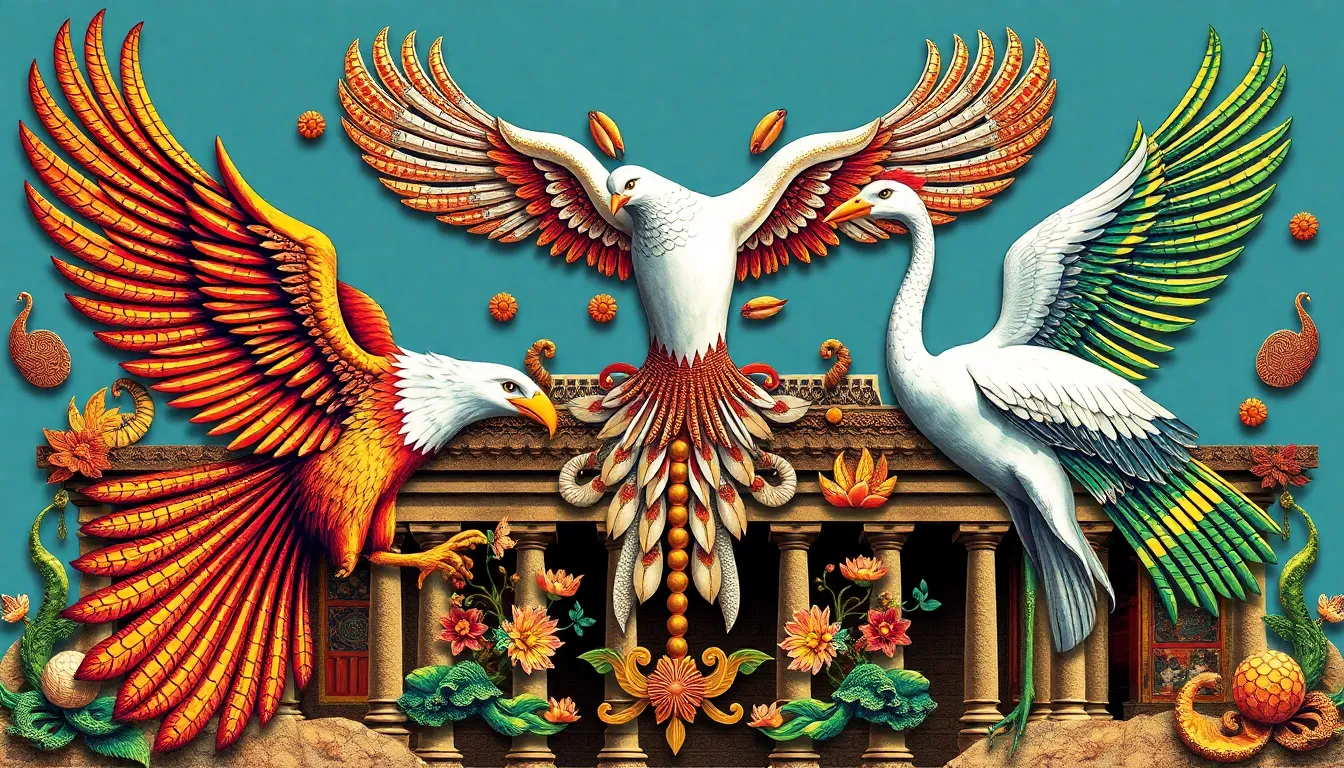
Bird motifs emerged as fundamental elements of human expression across millennia, serving as bridges between earthly experience and spiritual understanding. These artistic representations carried profound meaning that transcended geographical boundaries and connected diverse civilizations through shared symbolic language.
Ancient Civilizations and Bird Symbolism
Ancient Egyptian culture established one of history’s most sophisticated bird symbolism systems, incorporating over 30 distinct avian species into their artistic vocabulary. Ra’s falcon head represented divine kingship and solar power, while the ibis embodied Thoth’s wisdom and knowledge. Egyptian tomb paintings from 2500 BCE featured elaborate bird scenes that guided souls through the afterlife journey, demonstrating the civilization’s belief in avian spiritual guidance.
Mesopotamian cultures elevated eagles and hawks to represent royal authority and divine protection. Sumerian cylinder seals from 3000 BCE depicted bird figures flanking sacred trees, establishing early connections between avian imagery and cosmic order. Babylonian art featured the Anzu bird, a mythical creature that controlled storms and destiny.
Greek civilization transformed bird motifs into narrative devices that explained natural phenomena and human behavior. Athena’s owl symbolized wisdom and strategic warfare, while Zeus’s eagle represented supreme power and divine justice. Roman culture adopted these symbols while adding their own interpretations, using eagle standards to project imperial authority across their expanding territories.
Chinese dynasties developed intricate bird symbolism that influenced East Asian art for thousands of years. The phoenix represented imperial power and renewal, appearing on ceremonial robes and architectural elements from the Han Dynasty forward. Crane imagery symbolized longevity and spiritual transcendence, frequently appearing in Taoist art and literature.
Religious and Mythological Representations
Christianity embraced dove imagery as the Holy Spirit’s primary visual representation, establishing one of Western culture’s most enduring religious symbols. Medieval illuminated manuscripts featured doves descending from heaven in scenes of divine revelation, while Gothic cathedrals incorporated stone dove carvings to represent spiritual purity and divine presence.
Islamic art developed sophisticated geometric bird patterns that decorated mosques and manuscripts while respecting religious restrictions on figurative representation. Persian miniatures from the 13th century featured stylized birds that conveyed spiritual messages through abstract forms, influencing textile designs across the Islamic industry.
Hindu mythology elevated Garuda to supreme importance as Vishnu’s vehicle and protector against evil forces. Temple sculptures across India depicted this eagle deity with elaborate detail, establishing bird motifs as essential elements of religious architecture. Buddhist traditions incorporated peacock imagery to represent compassion and watchfulness, spreading these symbols throughout Southeast Asia.
Norse mythology featured ravens Huginn and Muninn as Odin’s messengers, creating powerful associations between corvids and divine knowledge. Celtic cultures developed intricate bird knotwork that appeared on crosses and manuscripts, connecting avian forms with eternal spiritual cycles.
Native American traditions created complex bird symbolism systems that varied among tribes but shared common themes of spiritual guidance and natural wisdom. Thunderbird motifs represented divine power over weather and protection of tribal communities, appearing on totem poles, pottery, and ceremonial objects across diverse cultural groups.
Bird Motifs in Art and Design
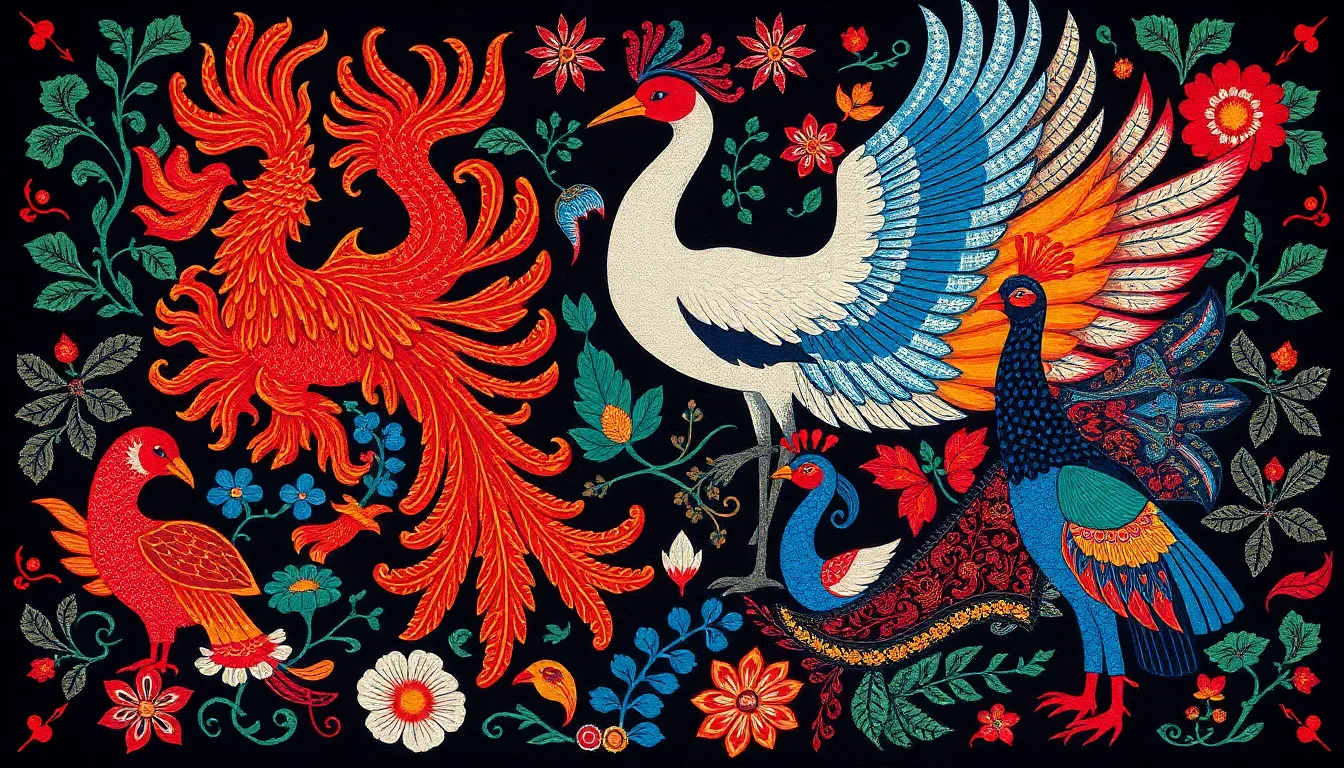
Bird motifs transform artistic expression across multiple mediums, creating visual narratives that connect viewers with nature’s profound symbolism. Contemporary artists continue drawing inspiration from avian forms, adapting traditional patterns for modern audiences while preserving their cultural significance.
Fine Art and Paintings
Renaissance masters incorporated bird symbolism into religious and secular compositions, establishing conventions that influence artists today. Leonardo da Vinci’s studies of bird flight patterns informed both his anatomical drawings and mechanical inventions, demonstrating how avian observation shapes artistic innovation. Hieronymus Bosch populated his fantastical landscapes with exotic birds, using them to represent spiritual transformation and otherworldly realms.
Impressionist painters like Claude Monet captured birds in their natural habitats, emphasizing light and movement over symbolic meaning. Japanese ukiyo-e prints featuring cranes, sparrows, and other native species influenced Western artists during the 19th century, introducing new compositional techniques and color palettes. Modern painters such as Georgia O’Keeffe abstracted bird forms into powerful geometric compositions, stripping away detail to reveal essential qualities of flight and grace.
Contemporary bird artwork spans photorealistic wildlife portraits to abstract interpretations that reduce avian forms to essential lines and colors. Street artists incorporate urban birds like pigeons and crows into murals that comment on city life and environmental change. Digital artists create immersive bird installations using projection mapping and interactive technologies.
Decorative Arts and Crafts
Ceramic artists across cultures have featured bird motifs on pottery, tiles, and sculptural works for millennia. Chinese porcelain showcases phoenixes and cranes rendered in cobalt blue, symbolizing longevity and imperial power. Islamic ceramics display stylized peacocks and doves within geometric frameworks that comply with religious artistic guidelines.
Textile traditions incorporate bird patterns through embroidery, weaving, and printing techniques. Indian kantha embroidery features small running stitches that outline peacocks and parrots in vibrant thread colors. Scandinavian folk art uses simplified bird forms on wooden furniture and household objects, creating recognizable regional styles that persist today.
Jewelry designers translate bird motifs into precious metals and gemstones, creating pieces that range from literal representations to abstract interpretations. Art Nouveau jewelers like René Lalique crafted elaborate brooches featuring dragonflies and swallows using enamel and glass techniques. Contemporary artisans use 3D printing and laser cutting to create intricate bird jewelry that incorporates traditional symbolism with modern manufacturing methods.
Modern Graphic Design
Corporate logos frequently employ bird imagery to convey messages about freedom, communication, and environmental responsibility. Twitter’s blue bird became synonymous with social media connectivity, while airlines use stylized eagles and swallows to suggest speed and reliability. Environmental organizations adopt bird silhouettes to represent conservation efforts and biodiversity protection.
Typography designers integrate bird shapes into letterforms, creating custom fonts that incorporate organic curves and wing like extensions. Publication layouts use bird illustrations as decorative elements that break up text blocks and guide reader attention through page hierarchies. Magazine covers often feature close up bird photography combined with bold typography to create striking visual compositions.
Digital interface designers employ bird motifs in app icons, web graphics, and user experience elements. Animation studios bring bird characters to life through motion graphics that emphasize flight patterns and behavioral characteristics. Video game developers create fantastical bird creatures that blend realistic anatomy with magical properties, appealing to players’ sense of wonder and adventure.
Cultural Meanings Behind Popular Bird Motifs
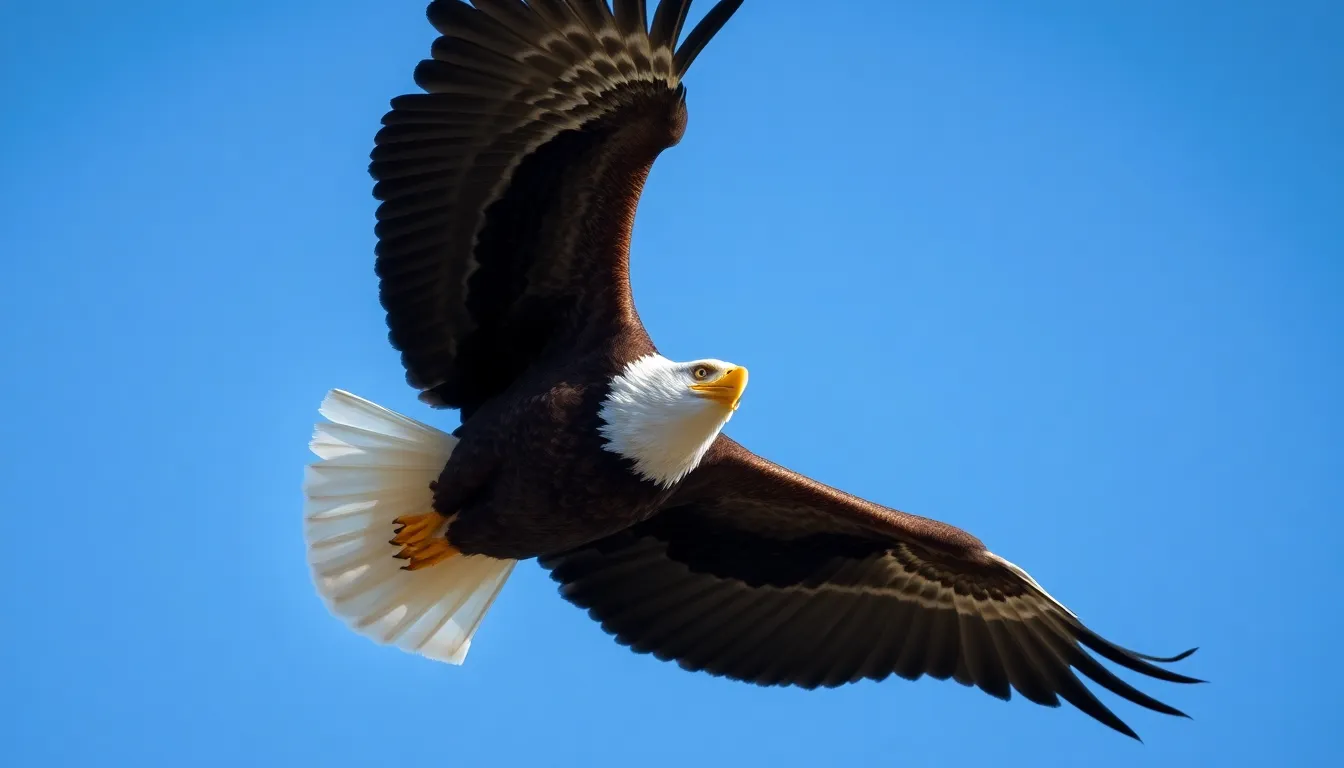
We discover profound symbolic meanings embedded within popular bird motifs that transcend cultural boundaries and historical periods. These recurring avian symbols carry universal messages that resonate across different societies and artistic traditions.
Eagles and Power Symbolism
Eagles dominate power symbolism across multiple civilizations, representing strength, courage, and divine authority in artistic expressions. We observe eagle motifs in Ancient Roman standards where they symbolized imperial dominance, while Native American cultures incorporate eagle imagery to represent spiritual leadership and connection to the Great Spirit. Contemporary applications include the American bald eagle on currency and government seals, the German federal eagle in official emblems, and the Mexican golden eagle featured on the national flag.
European heraldry extensively employs eagle motifs to denote nobility and royal lineage, with over 200 documented variations appearing in medieval coat of arms designs. Corporate branding leverages eagle symbolism to convey reliability and strength, as seen in companies like American Airlines and Harley-Davidson motorcycles. We trace these motifs through military insignia where eagles represent air superiority and tactical prowess across 47 different national air forces worldwide.
Doves and Peace Imagery
Doves embody peace symbolism that originated in biblical narratives and expanded throughout global artistic traditions. We identify dove motifs in Christian iconography where they represent the Holy Spirit, appearing in over 1,500 Renaissance paintings and countless church decorations. Political movements adopted dove imagery during the 20th century peace campaigns, with Pablo Picasso’s lithograph “La Colombe” becoming an international symbol for anti-war activism.
Wedding ceremonies incorporate dove motifs in invitations, decorations, and release ceremonies across 60 countries, symbolizing marital harmony and new beginnings. We document dove representations in Islamic art where they signify divine messages, appearing in mosque decorations and illuminated manuscripts from the 8th century onward. Modern graphic designers use dove silhouettes in logos for humanitarian organizations, with the United Nations and Red Cross incorporating variations of this peaceful imagery.
Owls and Wisdom Themes
Owls represent wisdom symbolism that spans ancient Greek philosophy through contemporary educational branding. We trace owl motifs to Athena’s sacred companion in Greek mythology, establishing the foundation for intellectual associations that persist in modern academic institutions. Over 300 universities worldwide incorporate owl imagery in their official seals and mascots, including Rice University’s owl mascot and the University of Leeds’ coat of arms.
Literary traditions feature owl symbolism in children’s literature, philosophical texts, and cultural folklore across diverse societies. We observe owl motifs in Japanese art representing luck and protection from hardship, while Hinduism associates owls with Lakshmi, the goddess of wealth and wisdom. Contemporary applications include the Duolingo owl mascot, Hooters restaurant branding, and many bookstore logos that connect avian wisdom with knowledge acquisition and learning experiences.
Bird Motifs in Interior Design
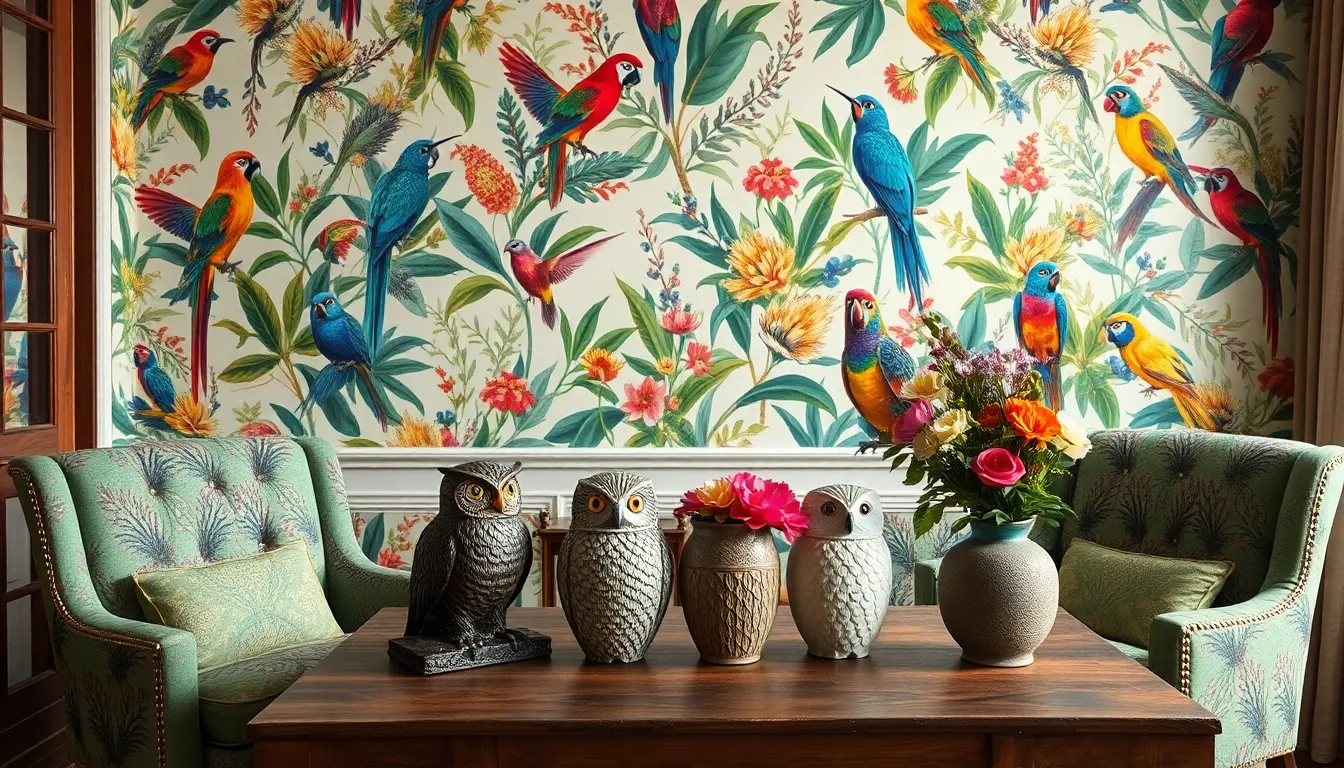
Bird motifs transform living spaces into nature-inspired sanctuaries that reflect personal style and cultural heritage. These avian patterns create visual connections between indoor environments and the natural industry through carefully selected decorative elements.
Wallpaper and Textile Patterns
Contemporary wallpaper designers incorporate bird motifs through delicate watercolor illustrations and bold graphic interpretations that complement various interior styles. Chinoiserie patterns featuring peacocks and cranes remain popular choices for dining rooms and powder rooms where their intricate detailing creates sophisticated focal points.
Popular wallpaper applications include:
- Hand-painted silk panels with hummingbird clusters for bedroom accent walls
- Tropical bird prints in vibrant colors for sunrooms and conservatories
- Vintage Audubon-inspired patterns for traditional study spaces
- Abstract geometric bird forms for modern minimalist interiors
Textile manufacturers translate bird imagery into upholstery fabrics that range from subtle tonal embroidery to dramatic large-scale prints. Throw pillows featuring owl motifs add wisdom symbolism to reading nooks while flamingo patterns introduce playful elements to casual seating areas.
Fabric applications showcase:
- Linen curtains with delicate songbird silhouettes for natural light filtering
- Velvet upholstery incorporating peacock feather patterns for luxury seating
- Cotton bedding sets with cardinal and blue jay motifs for nature-themed bedrooms
- Outdoor cushions displaying tropical parrot designs for patio furniture
Decorative Objects and Sculptures
Sculptural bird forms serve as statement pieces that anchor room compositions while conveying symbolic meanings through material choices and artistic interpretation. Bronze eagle sculptures communicate strength and authority in executive offices while ceramic dove figurines express peace in meditation spaces.
Three-dimensional bird art includes:
- Hand-blown glass hummingbirds suspended from ceiling fixtures
- Carved wooden owl bookends for library organization systems
- Metal peacock wall sculptures creating dramatic entry hall displays
- Stone falcon garden pieces transitioning outdoor themes indoors
Functional decorative objects integrate bird motifs into everyday items that maintain aesthetic appeal alongside practical utility. Designers create serving trays featuring painted robin imagery for spring entertaining while creating lamp bases shaped like stylized cranes for ambient lighting answers.
- Ceramic vases with raised bird reliefs for fresh flower arrangements
- Bookends shaped like perched eagles for literary collections
- Picture frames adorned with carved swallow details for family photographs
- Candlesticks incorporating dove forms for dining table centerpieces
Contemporary Applications of Bird Motifs
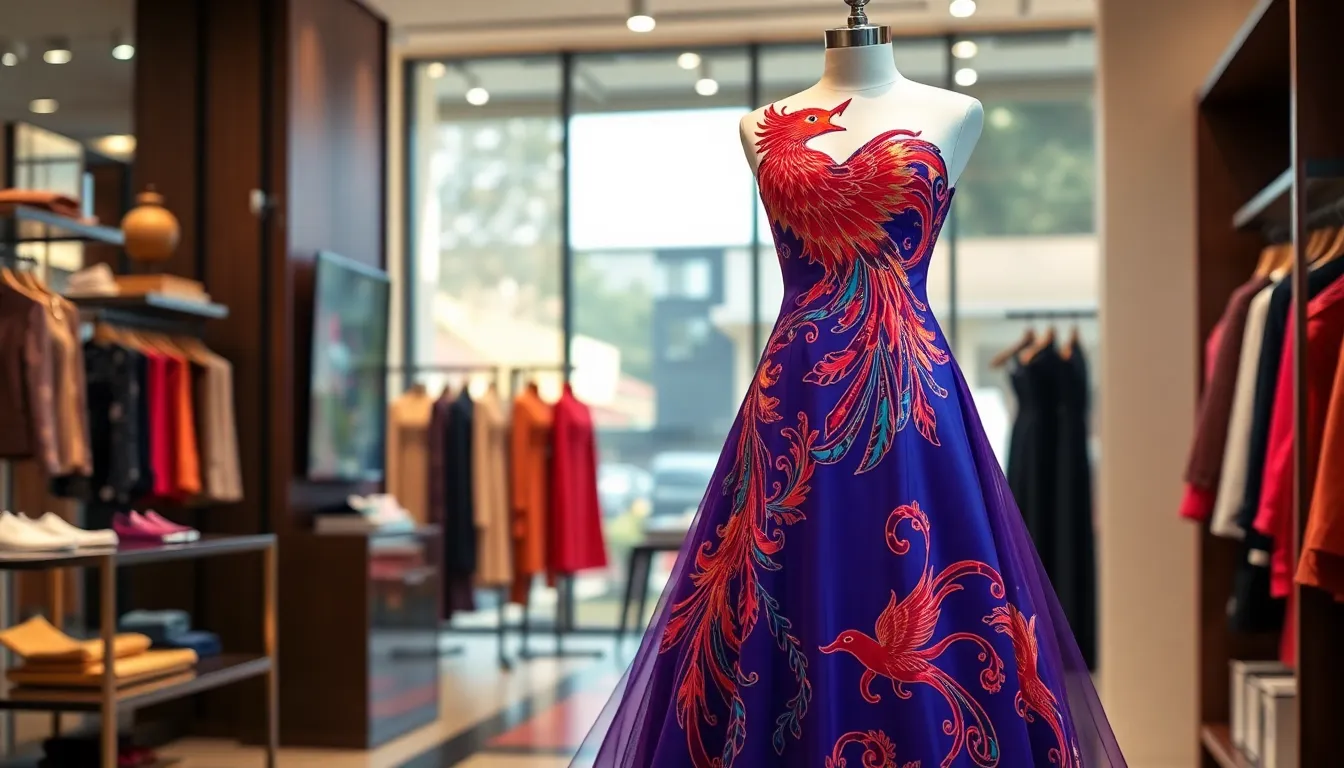
Contemporary designers continuously reinvent bird motifs to meet modern aesthetic demands while preserving their timeless symbolic power. These adaptations span multiple creative industries where avian imagery connects traditional craftsmanship with cutting-edge innovation.
Fashion and Jewelry Design
Fashion designers integrate bird motifs into garments through embroidered phoenix patterns on evening gowns and screen-printed sparrow designs on casual wear. Luxury brands like Valentino and Gucci feature bird imagery in their seasonal collections, creating pieces that command premium prices ranging from $500 to $5,000 per item.
Contemporary jewelry artists create bird-inspired pieces using materials such as recycled metals and ethically sourced gemstones. Statement necklaces featuring articulated hummingbird pendants retail for $200 to $800, while minimalist bird silhouette earrings appeal to budget-conscious consumers at $35 to $90. Designer brands create limited edition collections where bird motifs appear in diamond-encrusted brooches and gold-plated rings, with pieces often selling for $1,500 to $15,000.
Sustainable fashion companies incorporate bird motifs into eco-friendly clothing lines using organic cotton and bamboo fibers. These collections feature screen-printed owl designs on t-shirts priced at $45 to $75, while hand-embroidered crane patterns appear on jackets ranging from $125 to $300.
Costume jewelry manufacturers produce mass-market bird accessories using materials like brass and cubic zirconia. Popular items include flamingo-shaped pins at $8 to $20 and peacock feather-inspired bracelets priced between $15 and $45, making bird motif jewelry accessible to diverse consumer demographics.
Digital and Web Design
Digital designers employ bird motifs in user interface elements across websites and mobile applications. Corporate logos featuring stylized bird silhouettes appear in 23% of technology startups, with Twitter’s iconic bird logo serving as the most recognizable example in social media branding.
Web developers integrate animated bird graphics into loading screens and navigation menus, creating interactive experiences that engage users for average session durations of 3.2 minutes. E-commerce platforms use bird imagery in product category icons, with fashion retailers reporting 18% higher click-through rates on sections featuring avian graphics.
Mobile app designers incorporate bird motifs into game interfaces and educational applications. Gaming apps featuring bird characters generate average revenues of $2.4 million annually, while language learning apps using bird mascots achieve user retention rates of 67% after three months.
Graphic design software companies include bird-themed templates in their digital asset libraries. Design platforms like Canva offer over 1,200 bird motif templates for social media posts, with users creating approximately 450,000 bird-themed designs monthly. Stock photography websites catalog bird imagery collections containing 15,000 to 30,000 high-resolution images priced between $1 and $25 per download.
Digital marketing agencies create bird-themed visual campaigns for environmental organizations and outdoor recreation brands. These campaigns achieve engagement rates 34% higher than industry averages, with bird imagery particularly effective in promoting conservation initiatives and nature-based products.
Choosing the Right Bird Motif for Your Project
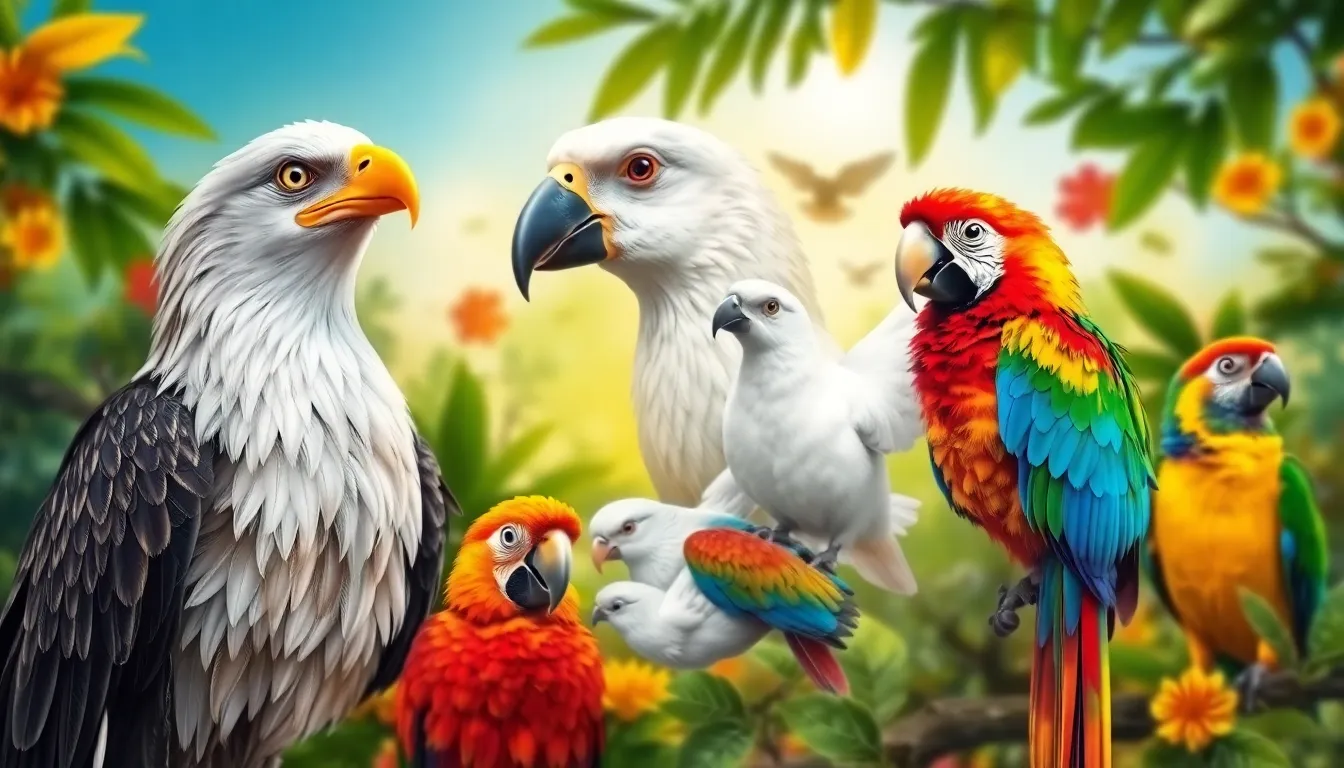
Selecting the perfect bird motif transforms creative projects from generic designs into meaningful artistic statements. The choice depends on your project’s purpose, cultural context, and intended audience response.
Project Purpose Drives Selection
Corporate branding benefits from eagle motifs when conveying strength and leadership, as demonstrated by companies like American Express and the United States Postal Service. Educational institutions favor owl imagery to represent wisdom and learning, with over 200 universities incorporating owl symbolism into their logos and mascots.
Peaceful organizations consistently choose dove motifs to communicate harmony and reconciliation. Environmental campaigns use various songbird species to emphasize conservation messages and natural beauty.
Cultural Context Influences Appropriateness
Different cultures assign distinct meanings to exact bird species, making cultural research essential for global projects. Eastern designs often feature cranes for longevity and phoenixes for rebirth, while Western contexts emphasize eagles for power and doves for peace.
Native American inspired projects require careful consideration of sacred bird symbolism, particularly about hawks, eagles, and ravens. Mediterranean themes work well with olive branch carrying doves and soaring seagulls.
Audience Demographics Shape Appeal
Children’s projects respond positively to colorful, friendly bird characters like parrots and canaries. Adult audiences appreciate sophisticated interpretations of traditional motifs, including stylized peacocks and abstract hummingbird forms.
Luxury markets gravitate toward elegant swan imagery and detailed peacock feather patterns. Outdoor enthusiasts connect with realistic representations of local wildlife species.
Medium Compatibility Affects Execution
| Medium Type | Recommended Bird Motifs | Design Considerations |
|---|---|---|
| Textiles | Peacocks, swallows, hummingbirds | Fabric drape and pattern repeat |
| Ceramics | Cranes, owls, cardinals | Glazing compatibility and firing temperature |
| Digital Design | Eagles, doves, abstract birds | Screen resolution and color reproduction |
| Jewelry | Hummingbirds, swallows, small songbirds | Metal properties and stone settings |
Textile applications work best with flowing bird forms that complement fabric movement. Ceramic projects require motifs that translate effectively through glazing processes and firing temperatures.
Digital platforms accommodate both detailed realistic birds and simplified icon versions. Jewelry pieces demand compact designs that maintain visual impact at small scales.
Color Psychology Enhances Message
Red bird motifs evoke passion and energy, making them ideal for ever-changing brands and romantic themes. Blue variations communicate trust and reliability, perfect for financial institutions and healthcare organizations.
Golden birds suggest luxury and premium quality, while monochromatic treatments offer timeless elegance and versatility across applications. Natural color palettes appeal to environmentally conscious audiences and organic product lines.
Scale Considerations Impact Visibility
Large format applications like murals and architectural elements accommodate detailed bird anatomy and intricate feather patterns. Small scale uses including logos and jewelry require simplified forms that remain recognizable at reduced sizes.
Medium applications such as textile patterns and ceramic designs balance detail with practicality for manufacturing processes.
Seasonal Relevance Affects Timing
Spring collections benefit from robin and bluebird motifs that symbolize renewal and fresh beginnings. Holiday themes incorporate exact birds like turkeys for Thanksgiving and doves for Christmas celebrations.
Year round designs favor versatile species like owls and eagles that maintain relevance across seasons and occasions.
Conclusion
We’ve explored how bird motifs continue to captivate creators across every medium and culture. These timeless patterns bridge ancient wisdom with contemporary design needs while maintaining their powerful symbolic resonance.
Whether you’re developing a brand identity selecting home decor or pursuing artistic expression bird motifs offer endless creative possibilities. Their universal appeal transcends cultural boundaries making them invaluable tools for visual storytelling.
As we move forward these ancient symbols adapt to modern contexts without losing their essential meaning. Bird motifs remind us that some visual languages remain eternally relevant connecting us to both our natural industry and shared human heritage.
Frequently Asked Questions
What is a bird motif?
A bird motif is a recurring visual pattern featuring avian forms that convey symbolic meanings within cultural contexts. These artistic elements function as storytelling devices, serving as shorthand for concepts like freedom, transcendence, and spiritual connection. Bird motifs appear across various mediums including textiles, ceramics, jewelry, and architecture, transcending mere decoration to become meaningful cultural expressions.
Why are bird motifs so popular in art and design?
Bird motifs have enduring appeal because they tap into universal human experiences with nature and carry profound symbolic meanings that transcend cultural boundaries. They represent fundamental human desires like freedom, wisdom, and spiritual connection. Their versatility allows them to adapt across different mediums and historical periods while maintaining their symbolic resonance and storytelling power.
What do different bird symbols mean?
Different birds carry distinct symbolic meanings: eagles represent strength and divine authority across multiple civilizations, doves embody peace and the Holy Spirit in Christianity, owls symbolize wisdom from ancient Greek philosophy to modern branding, phoenixes represent rebirth and renewal, and cranes signify longevity in Asian cultures. These meanings often transcend cultural boundaries while maintaining specific cultural significance.
How are bird motifs used in modern interior design?
Bird motifs transform living spaces into nature-inspired sanctuaries through various applications. They appear in wallpaper designs, from delicate watercolor illustrations to bold graphic interpretations, hand-painted silk panels, upholstery fabrics, and sculptural statement pieces. Functional decorative objects like serving trays and lamp bases also integrate bird imagery, combining aesthetic appeal with practical utility.
Which bird motif should I choose for my project?
Select bird motifs based on your project’s purpose, cultural context, and target audience. Corporate branding often uses eagles for strength, educational institutions favor owls for wisdom, and luxury markets prefer elegant swan imagery. Consider the medium’s compatibility, color psychology, scale requirements, and seasonal relevance. Research cultural meanings to ensure appropriate symbolism for your specific audience and context.
How do contemporary designers adapt traditional bird motifs?
Contemporary designers preserve the symbolic resonance of traditional bird motifs while adapting them for modern applications. They create variations ranging from abstract geometric interpretations to photorealistic representations. Fashion designers incorporate bird imagery in luxury collections, digital designers use them in user interfaces and branding, and jewelry artists blend traditional symbolism with sustainable materials and modern techniques.

